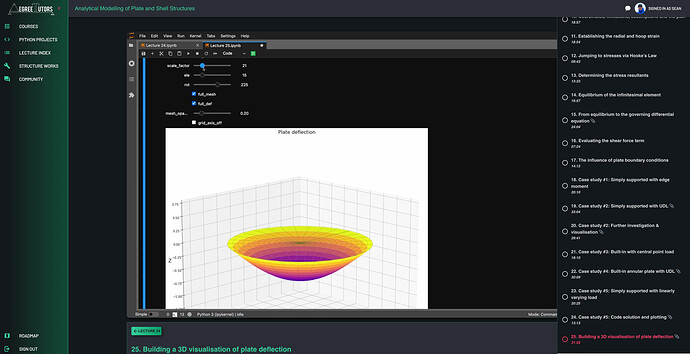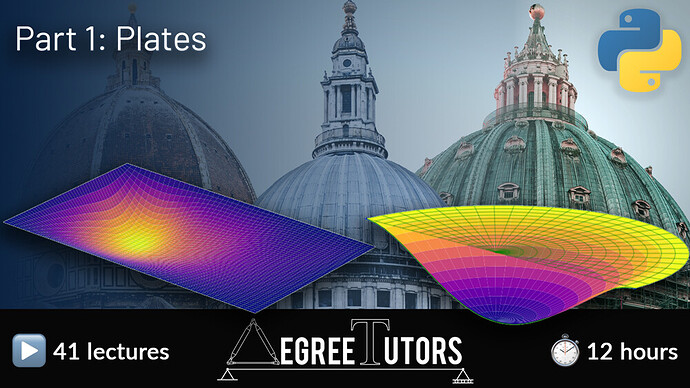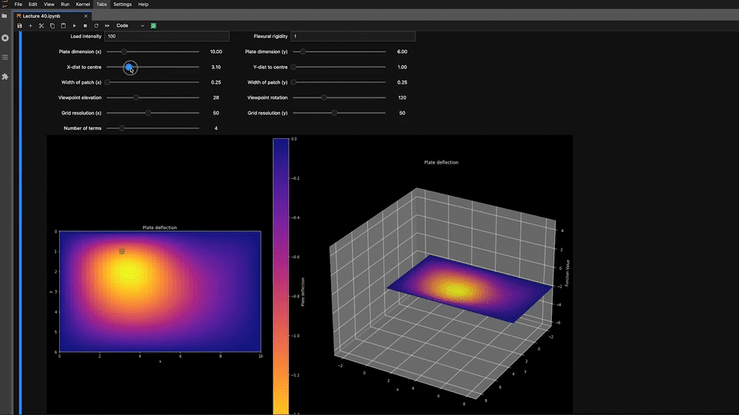Hi,
The next topic we’re diving into is the Analytical Modelling of Plate and Shell Structures.
Similarly to how we took a deep dive into cable analysis last year, our exploration of plates and shells will span over several upcoming courses.
We’re going to start by focusing on understanding how to model the behaviour of these structures under load, from an analytical point of view. So, we’ll be developing closed-form solutions for a range of different geometries. The course will be divided up as follows:
- A General Introduction to Plate and Shell Structures
- Analysis of Circular Plates
- Analysis of Rectangular Plates
- The Membrane Theory of Shells
- Applying the Theory to Elemental Shells
- Compound Shell Structures
This course focuses on building a collection of models and tools to help you analyse idealised plate and shell structures. You may be thinking…
…‘why focus on analytical methods when there are so many finite element (FE) solvers at our fingertips?’
The answer is simple - if you want to deploy FE with confidence, you should have a solid understanding of the fundamental behaviour first.
Taking this approach also gives us the ability to sensibly interrogate the results we get back from FE solvers. It will also be helpful when we build our own FE plate solver in an upcoming course ![]()
 Early access for members
Early access for members
I’ve just pushed the first 6 hours of course content covering sections 1 and 2.
All Access Subscribers and Lifetime Members can access this content now in the DegreeTutors:Labs membership area. If you’re not a member or lifetime subscriber - the course will be released for sale once it’s fully complete.
Keep an eye out here for updates on new section releases over the coming weeks.
Seán




